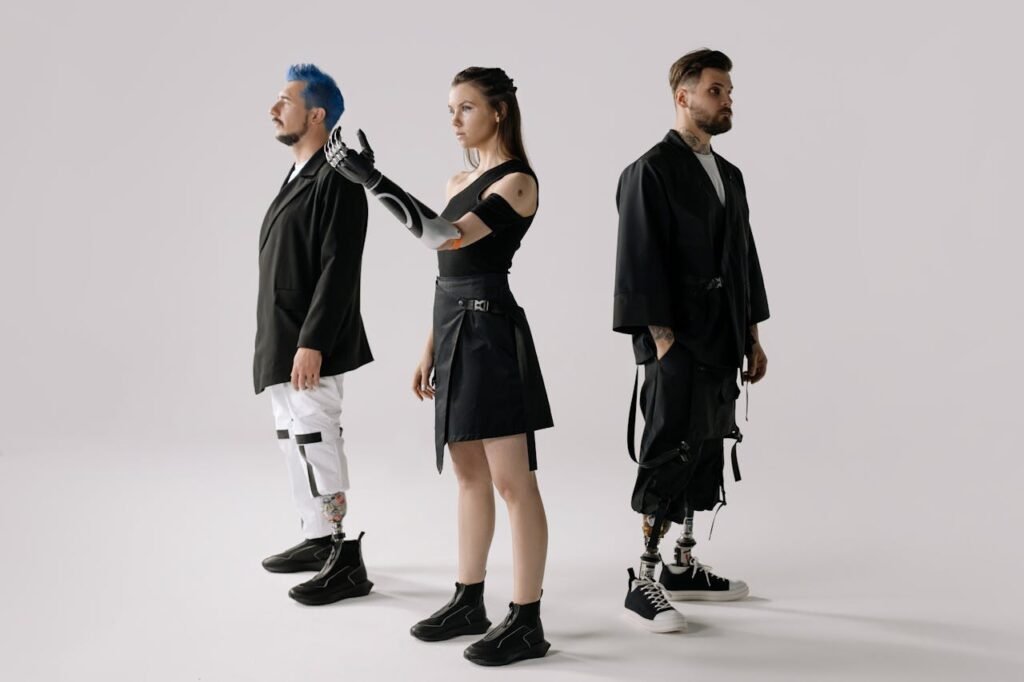Myoelectric technology has transformed the way trans-radial prosthetic hands function, offering users improved mobility, precision, and independence. Unlike traditional body-powered prosthetics, which rely on cables and harnesses, myoelectric prosthetics use electrical signals from muscles to control hand movements. This technology enables smoother and more intuitive interactions, making daily tasks easier and more natural for users.
With advancements in robotics and artificial intelligence, myoelectric prosthetics are becoming increasingly sophisticated, offering multi-grip functionality, customizable controls, and even sensory feedback. But how exactly does myoelectric control work, and why is it such a game-changer for trans-radial amputees? In this article, we’ll explore the science behind myoelectric control, its benefits, and how it is shaping the future of upper-limb prosthetics.
Understanding Myoelectric Control in Trans-Radial Prosthetics
Myoelectric prosthetics use muscle signals to operate artificial hands, allowing users to control movements more naturally. The integration of electrical impulses from the body into prosthetic function is a major leap forward in prosthetic technology.
How Myoelectric Control Works
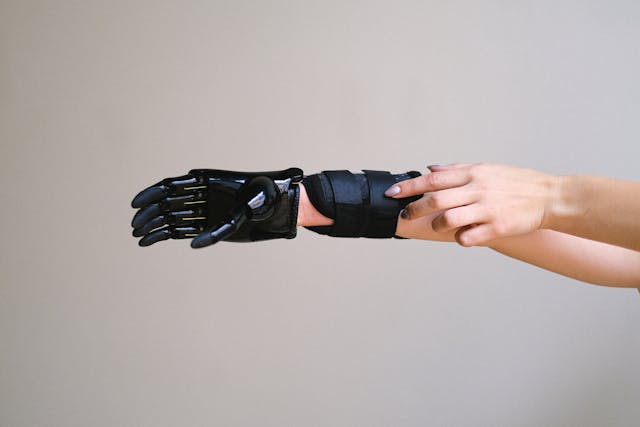
Myoelectric prosthetics function by detecting electrical signals produced by muscle contractions in the residual limb. When a user attempts to move their hand or fingers, electrodes inside the prosthetic socket pick up these signals and translate them into corresponding movements.
For example, when a user contracts a specific muscle, the sensors detect this activity and trigger the prosthetic hand to close, open, or rotate. The system can be programmed to recognize different levels of muscle contractions, allowing for varied grips and movements.
Unlike mechanical prosthetics, which require physical effort from the shoulders or upper arm to manipulate the hand, myoelectric prosthetics respond directly to muscle signals, providing a more natural experience. This makes them particularly beneficial for individuals with trans-radial amputations, where some forearm muscles remain intact and functional.
Components of a Myoelectric Prosthetic System
A myoelectric prosthetic consists of several key components that work together to create smooth, responsive movements:
- Electrodes: These sensors are embedded within the prosthetic socket and detect muscle activity from the residual limb.
- Microprocessor: This component processes the muscle signals and converts them into commands that control the prosthetic hand’s movements.
- Battery System: Myoelectric prosthetics require a rechargeable battery to power the electronics, including the sensors and microprocessors.
- Artificial Hand: The prosthetic hand or hook performs the actual movements based on user commands. Advanced versions offer multi-grip functionality and wrist rotation.
The seamless communication between these components allows for quick response times, giving users more control and flexibility in their movements.
Why Myoelectric Control is Ideal for Trans-Radial Amputees
Trans-radial amputees still retain movement in the forearm, making them excellent candidates for myoelectric prosthetics. Since the muscle groups responsible for wrist and hand control are still present, they can be trained to send strong electrical signals to operate a prosthetic hand.
Additionally, myoelectric prosthetics allow for independent finger control and precise grip adjustments, which are essential for performing delicate tasks like writing, typing, or using utensils. The combination of better control, intuitive operation, and reduced physical strain makes myoelectric technology a highly effective solution for individuals with trans-radial limb loss.
The Benefits of Myoelectric Prosthetics Over Traditional Options
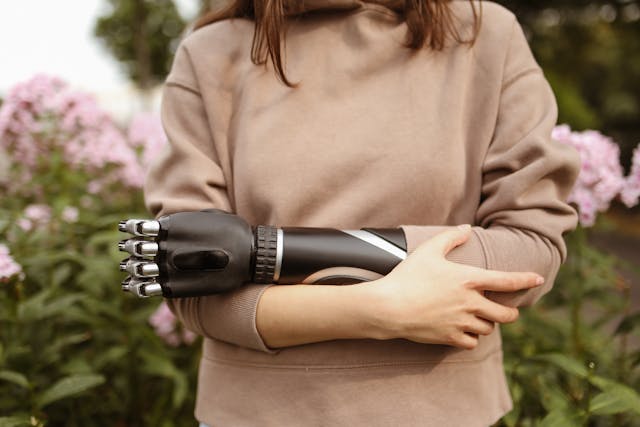
Myoelectric prosthetics have revolutionized upper-limb prosthetics by providing users with a higher degree of function and comfort. Compared to body-powered and cosmetic prosthetics, myoelectric devices offer several key advantages.
Enhanced Natural Movement and Precision
One of the biggest advantages of myoelectric prosthetics is their ability to mimic natural hand movements. Unlike mechanical prosthetics that rely on cables and harnesses, myoelectric hands move in response to actual muscle signals, creating a smoother, more natural range of motion.
Users can perform everyday tasks like gripping a pen, holding a coffee mug, or shaking hands without awkward or exaggerated motions. The ability to control grip strength also prevents accidental dropping or crushing of objects. With multi-grip capabilities, users can seamlessly switch between different hand positions depending on the task at hand.
Reduced Physical Strain and Fatigue
Traditional body-powered prosthetics require users to engage their shoulders and upper body to operate the artificial hand. Over time, this can cause strain, discomfort, and fatigue.
Myoelectric prosthetics eliminate the need for excessive physical effort by responding directly to muscle signals. This allows users to perform activities with minimal exertion, reducing long-term discomfort and making the prosthetic easier to use for extended periods.
For individuals who need to wear their prosthetic hand all day, this reduction in strain is a significant improvement, allowing them to go about their routines without unnecessary physical stress.
Greater Comfort and Improved Aesthetics
Many users prefer myoelectric prosthetics because they provide a sleek, modern design that closely resembles a natural hand. Unlike mechanical prosthetics, which often have visible cables and harnesses, myoelectric hands are self-contained, creating a more polished and realistic appearance.
Additionally, the lack of external harnesses makes myoelectric prosthetics more comfortable to wear. A well-fitted socket, combined with lightweight materials, ensures that users can move freely without feeling restricted by straps or external supports.
Recent Innovations in Myoelectric Prosthetics
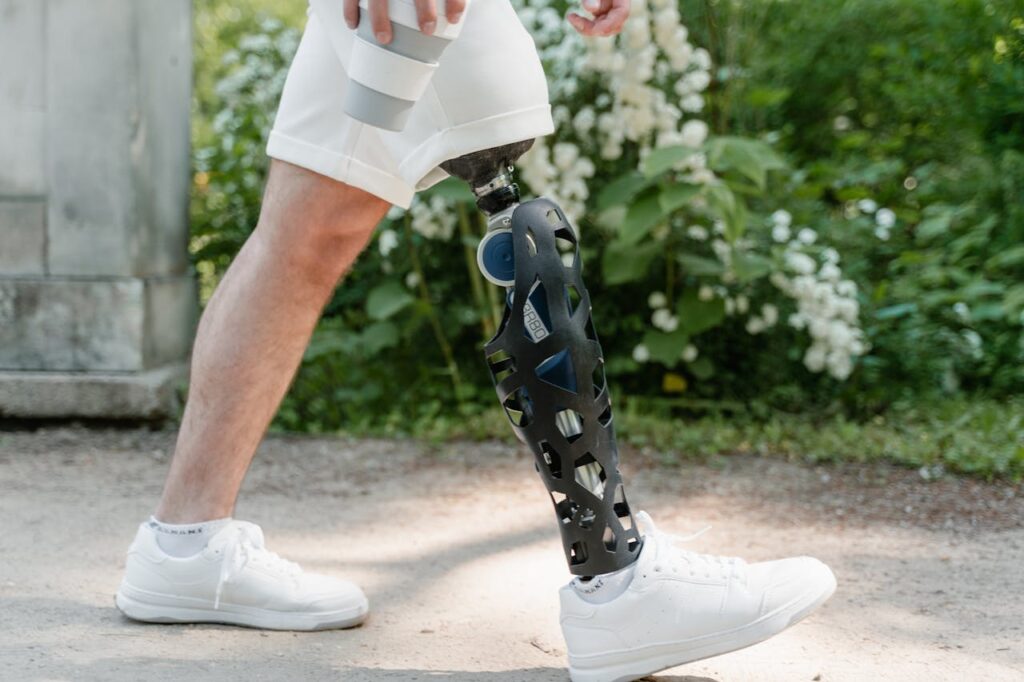
Advancements in myoelectric technology continue to improve the functionality, responsiveness, and adaptability of prosthetic hands. New innovations are pushing the boundaries of what prosthetic users can achieve.
AI-Driven Muscle Learning for Better Control
One of the most exciting developments in myoelectric prosthetics is the integration of artificial intelligence (AI) and machine learning. AI-powered prosthetics can analyze a user’s movement patterns over time and adjust the hand’s response to improve accuracy and ease of use.
For example, an AI-powered prosthetic can learn how a user typically grips objects and fine-tune its movements accordingly. This adaptive learning system reduces the need for constant manual adjustments, making prosthetic control feel more effortless and intuitive.
Sensory Feedback for a More Natural Experience
One of the biggest challenges with prosthetic hands has been the lack of sensory feedback—users have to rely entirely on visual cues to gauge grip strength and object position. However, new myoelectric prosthetics are incorporating haptic feedback technology, which uses small vibrations to simulate the sense of touch.
These systems allow users to “feel” the pressure of their grip, improving object handling and reducing accidental drops. Some models even connect directly to the nervous system, restoring a partial sense of touch through electrical stimulation.
Wireless and Smartphone-Connected Prosthetics
Recent advancements have introduced Bluetooth-enabled prosthetic hands that connect to smartphone apps, allowing users to adjust grip patterns, movement speed, and sensitivity. This customization ensures that the prosthetic hand matches the user’s preferences and lifestyle needs.
Users can program specific movements for different tasks, such as typing, cooking, or sports, and switch between them effortlessly through a mobile interface. These features make myoelectric prosthetics even more adaptive and user-friendly.
The Role of Rehabilitation and Training in Optimizing Myoelectric Prosthetic Use
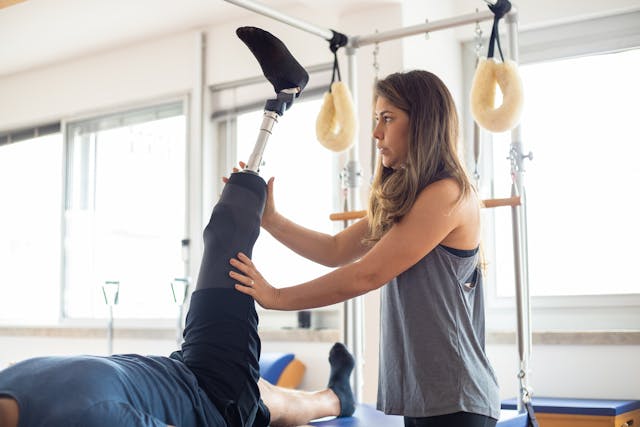
While myoelectric prosthetics offer advanced functionality, proper rehabilitation and training are essential to unlocking their full potential. Adapting to a prosthetic hand requires users to develop muscle control, refine movement accuracy, and build confidence in everyday activities. A structured training program ensures a smoother transition and long-term success.
Building Muscle Control for Effective Prosthetic Operation
Since myoelectric prosthetics rely on muscle signals, users must strengthen and train their residual limb muscles to generate clear and consistent electrical impulses. Initially, many new users may struggle to control their prosthetic hand due to weak or underused muscles.
Physical therapists guide users through targeted muscle-strengthening exercises, helping them develop the ability to contract and relax specific muscles needed for prosthetic movement. These exercises improve muscle coordination, ensuring that users can control their myoelectric hand effortlessly.
Electrode placement also plays a crucial role in performance. A prosthetist fine-tunes the placement of sensors within the socket, ensuring they detect the strongest signals while minimizing accidental movements. As users gain better control over their muscle contractions, the prosthetic hand responds more accurately to commands.
Mastering Grip Patterns and Hand Coordination
Myoelectric prosthetics come with multiple grip modes, allowing users to perform a variety of tasks. Learning when and how to switch between grips is a critical part of training. Some common grip patterns include:
- Power Grip: Used for holding larger objects like a bottle or bag.
- Precision Pinch: Ideal for picking up small items like a pen or coin.
- Tripod Grip: Commonly used for writing or holding utensils.
- Lateral Pinch: Suitable for grasping flat objects like paper or credit cards.
Occupational therapists help users practice these grips in real-world situations, such as eating, typing, or lifting household items. Repeated practice builds muscle memory, allowing users to transition between grips more naturally without overthinking each movement.
Additionally, some advanced prosthetic systems offer gesture-based controls that allow users to program custom grip sequences. Training sessions help users become familiar with these features, making their prosthetic use more efficient and intuitive.
Daily Adaptation and Long-Term Maintenance
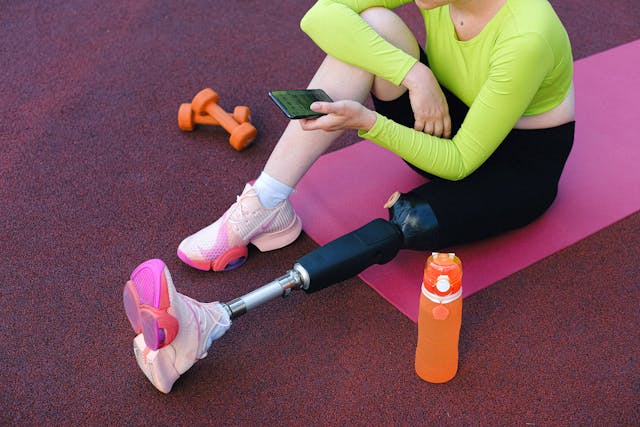
Successfully integrating a myoelectric prosthetic into daily life requires consistent practice and ongoing adjustments. Users must develop strategies for managing different environments, handling unexpected situations, and maintaining their prosthetic for long-term durability.
Simple daily routines—such as dressing, cooking, or personal grooming—require practice to perfect. Many rehabilitation programs introduce simulated real-life scenarios to help users build confidence in performing everyday tasks.
Regular check-ups with a prosthetist ensure that the prosthetic remains well-fitted and properly calibrated. As the residual limb changes over time, minor adjustments to the socket or electrode positioning may be necessary to maintain comfort and efficiency.
At Robobionics, we provide personalized training and ongoing support to help users adapt to their myoelectric prosthetic seamlessly. Our goal is not just to provide advanced prosthetic technology but to ensure that users feel confident and comfortable integrating it into their lives.
Overcoming Challenges in Myoelectric Prosthetic Use
While myoelectric prosthetics provide advanced functionality and improved control, users often face certain challenges during the adaptation process. Understanding these challenges and learning how to manage them effectively can lead to a smoother experience and better long-term success.
Adapting to the Learning Curve
For new users, controlling a myoelectric prosthetic can feel unnatural at first. Unlike a natural hand, which responds instantly to brain signals, a myoelectric prosthetic requires users to train their muscles to generate the correct electrical signals.
Some users initially struggle with:
- Unintended movements due to inconsistent muscle signals.
- Difficulty switching between grips because of unfamiliar muscle contractions.
- Delayed response time as the prosthetic processes signals.
However, with consistent training and practice, these difficulties gradually decrease. Muscle control exercises and biofeedback therapy help users understand how to activate the correct muscles with precision. Many modern myoelectric systems also feature adaptive learning algorithms, which fine-tune the device’s response over time based on user behavior.
At Robobionics, we offer personalized training sessions to help users adapt to their prosthetic faster and with greater confidence.
Managing Battery Life and Power Efficiency
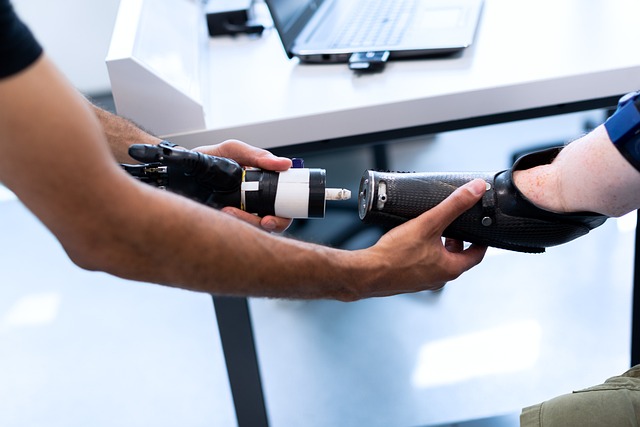
Myoelectric prosthetics rely on battery-powered systems, which means users must monitor power levels and charge their device regularly. Some users worry about their prosthetic running out of battery during the day, particularly when using high-energy functions such as multi-grip switching and wrist rotation.
To maximize battery efficiency, users can:
- Charge the prosthetic overnight to ensure a full day’s use.
- Reduce unnecessary hand movements when not in use.
- Use low-power mode when performing tasks that don’t require strong grip force.
Newer models feature longer-lasting batteries and fast-charging technology, reducing downtime and improving reliability. Future advancements may introduce wireless charging or energy-harvesting technologies that use body movement to generate power.
Ensuring a Comfortable and Secure Fit
A poorly fitted prosthetic socket can cause discomfort, skin irritation, or even pressure sores. Since myoelectric sensors are embedded within the socket, a loose fit can weaken signal detection, making hand movements less responsive.
To maintain optimal comfort and performance, users should:
- Have their prosthetic professionally fitted by a prosthetist.
- Use soft liners or vacuum suspension to improve comfort.
- Schedule regular adjustments as the residual limb changes shape over time.
At Robobionics, we provide customized socket designs using 3D scanning and pressure-mapping technology, ensuring the best possible fit for each user.
Conclusion: The Future of Myoelectric Trans-Radial Prosthetics
Myoelectric control has revolutionized trans-radial prosthetic functionality, providing greater precision, comfort, and usability than ever before. By allowing users to control artificial hands with natural muscle signals, myoelectric prosthetics reduce strain, improve efficiency, and restore independence.
As technology continues to evolve, AI-driven learning, sensory feedback, and wireless connectivity will further enhance prosthetic performance, making myoelectric hands even more intuitive and functional. These advancements bring us closer to a future where prosthetics seamlessly integrate with the human body, offering lifelike movement and sensation.
At Robobionics, we are committed to providing cutting-edge myoelectric prosthetics designed for maximum comfort and performance. If you are exploring prosthetic options and want to experience the latest innovations in trans-radial myoelectric technology, contact us today for a consultation. Let us help you regain confidence and mobility with a prosthetic hand that fits your needs.



